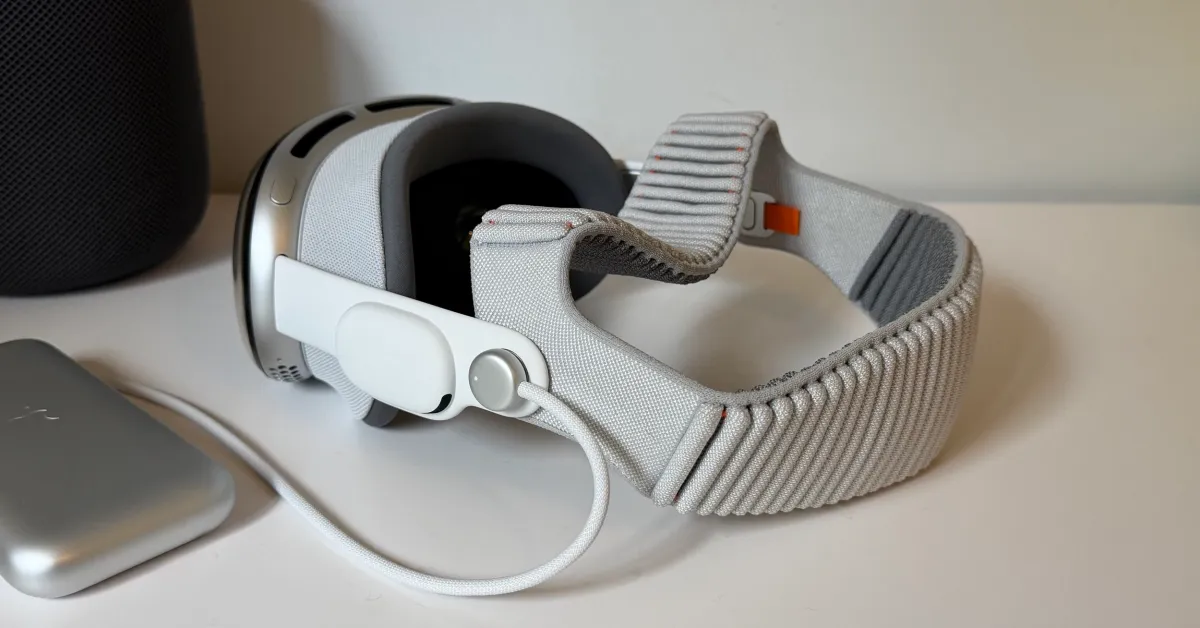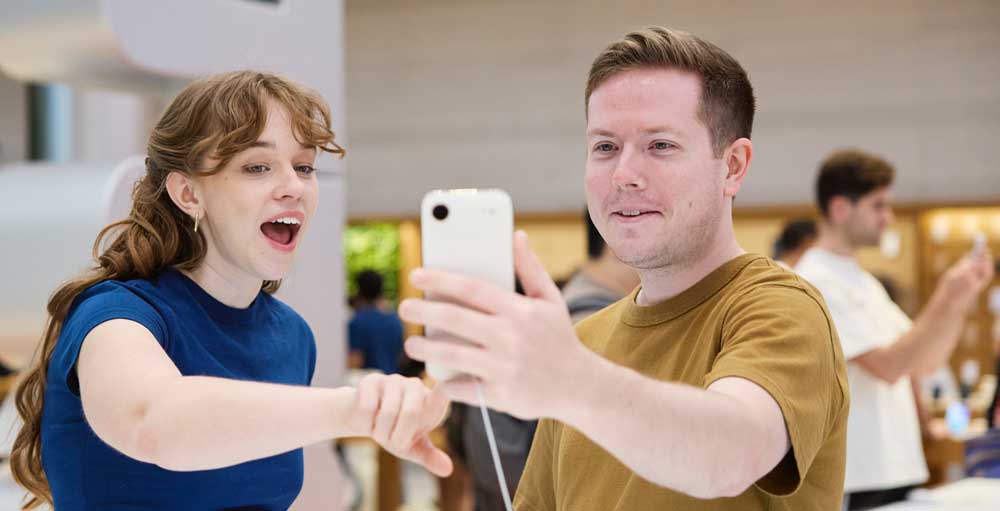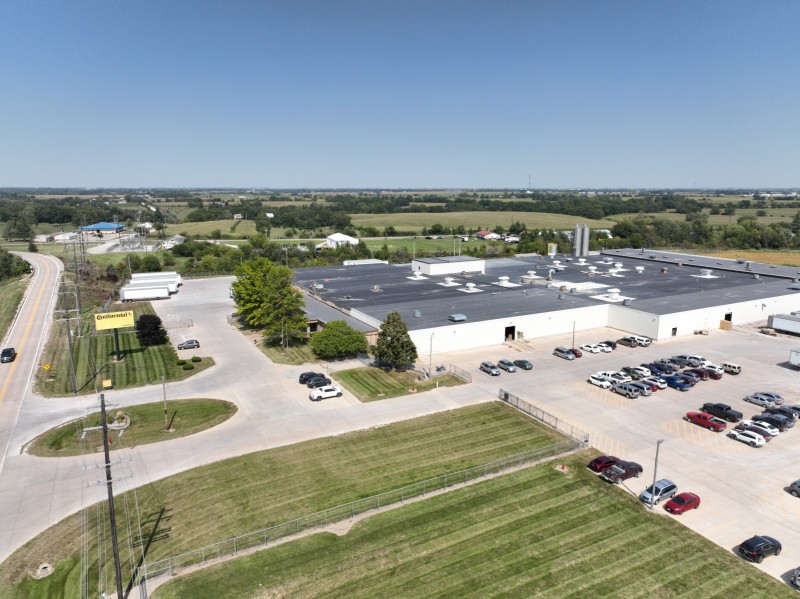Copyright 9to5Mac

Apple’s first Vision Pro hardware update is here, and it’s more than just a spec bump. Sure, there’s an M5 chip inside, but that doesn’t tell the full story. I’ve been using the new Vision Pro (M5) for the last five days. Here’s everything you need to know. Dual Knit Band The most important change to the new Vision Pro is the Dual Knit Band. The original Vision Pro shipped with two bands in the box: the fashionable, engineering marvel Solo Knit Band and the industrialized, practical Dual Loop Band. It was clear from day one that the Solo Knit Band was the band Apple wanted everyone to use, but its single-strap design simply wasn’t practical for many Vision Pro users. The Dual Loop band was less impressive from an engineering perspective (basically just two velcro straps attached to each other). That’s where the new Dual Knit Band comes in. The easiest way to describe it is as two Solo Knit Bands connected, with one sitting across the top of your head and another on the back of your head. Both of the What’s particularly impressive about the Dual Knit Band is how easy it is to adjust. There’s a single dial on the right-hand side that controls the fit of the top and back bands. When pushed in, it tightens or loosens the lower strap, and when pulled out, it does the same for the top strap. It’s far better than having to deal with awkward velcro straps. On paper, the Vision Pro (M5) is heavier than its predecessor. Yes, you read that right. The headset that everyone has criticized for being too heavy has gotten even heavier … but it’s for good reason! That increase in weight is due entirely to the new strap. The bottom strap on the Dual Knit Band has tungsten inserts that are designed to act as a counterweight. When you wear Apple Vision Pro, the weight is primarily on the front of your face because that’s where the headset is. With the new Dual Knit Band, the idea is to better distribute that weight between the front and back. In practice, the Dual Knit Band is a huge upgrade over the Solo Knit Band and Dual Loop Band. It’s what Apple should’ve shipped from the start. It’s more comfortable and plush, it’s more adjustable, it’s easier to put on and take off, and it looks better than the Dual Loop Band. I’ve noticed that the counterweight in particular does a good job of taking pressure off my face when wearing Vision Pro for extended periods of time. My previous setup with Vision Pro was the Solo Knit Band paired with Belkin’s Head Strap. Some sort of solution similar to that setup is what I expected Apple to ship with Vision Pro (M5). I’m glad they went a step further and engineered the far more impressive Dual Knit Band. A comfortable band that is easy to adjust (and doesn’t rely on velcro at all!) is exactly what Vision Pro needed. M5 chip The original Vision Pro shipped in February 2024 with the M2 chip in tow … even though Apple had already started releasing Macs powered by the M3 chip. This basically made Vision Pro “out of date” in that aspect from day one. Was it a big deal in practice? Not at all. 18 months later, however, the M2 chip was starting to stick out like a sore thumb on the Vision Pro’s spec sheet. We’re spoiled by how good Apple Silicon has gotten, especially on the Mac. I can throw just about anything at my MacBook Pro, and it handles it in stride. However, the M2 Vision Pro is the only Apple product where it regularly struggled to keep up with everything I was throwing at it. Open too many windows and the frame rate would drop and the fans would kick in. The reason for this is that the “baseline” for Vision Pro is significantly higher than that of any other Apple product. At any given time, it’s providing you with a live video feed of your environment around you, or showing you a complex immersive environment. It’s tracking all of your head and hand movements. All in addition to, well, being a computer and doing everything we expect from a computer. The R1 chip helped with some of this, specifically with real-time input, but it didn’t do everything. Enter the new Vision Pro, powered by the M5 chip and the R1 chip. It’s hard to quantify exact performance improvements for the M5 chip in Vision Pro. Benchmarks don’t really tell the full story, seeing as Vision Pro is such a different computing platform from the Mac or the iPad. In my five days with the Vision Pro (M5), I’ve had significantly more consistent performance across various workflows. In situations where the M2 Vision Pro would start to lag and stutter, the M5 Vision Pro keeps up. The fans still kick in, but overall performance is more sustainable and consistent, even as my windows began to pile up. The M5 chip is also how Apple is able to eke out more battery life from Vision Pro. It now touts up to two and a half hours of general use, and up to three hours of video playback. This is up from two hours of general use and two and a half hours of video playback. More pixels, 120Hz The M5 chip in the new Vision Pro enables two significant upgrades to the displays. The displays are, of course, the most critical component of Vision Pro, and the new model features the same two screens as before, but the M5 chip has given Apple the headroom to unlock two things: more pixels and a higher refresh rate. Apple says that Vision Pro (M5) “renders 10 percent more pixels on the custom micro-OLED displays compared to the previous generation, resulting in a sharper image with crisper text and more detailed visuals.” This is primarily due to improving Vision Pro’s foveated rendering by increasing the size of the in focus area. As a refresher, foveated rendering is a technique where the system uses built‑in eye tracking to determine exactly where you’re looking, then renders that small central region in high resolution while progressively lowering detail toward the edges of your view. This approach lets the headset focus its graphics processing power where your eyes are actually looking, improving performance and efficiency without noticeably reducing perceived visual quality. With the M5 chip in the new Apple Vision Pro, Apple was able to increase the size of the in focus area, hence the “10 percent more pixels” claim. Apple also touts that Vision Pro (M5) can increase the refresh rate of the displays up to 120Hz for reduced motion blur. Previously, Vision Pro topped out at a 100Hz refresh rate. Both of these improvements are most noticeable when using Mac Virtual Display, which I continue to think is one of the best (if not the best) features of Apple Vision Pro. The increased size of the in focus area lets me see more on my Mac’s display when I just glance out of the corner of my eye. The increased refresh rate means Mac Virtual Display is overall smoother than before, with smoother scrolling and better responsiveness as I look around the display. The one area where I don’t notice much of an improvement is passthrough mode. There’s maybe a slight improvement thanks to the higher refresh rate, but it’s nothing dramatic. I was hard-pressed to really notice a difference in a side-by-side comparison. Still, an improvement to Mac Virtual Display, the feature I use most, makes a big difference in my Vision Pro experience. 9to5Mac’s Take Ostensibly, this is a review of the Apple Vision Pro (M5) hardware. That said, I don’t think it’s fair to review the new hardware without also highlighting the numerous ways Apple Vision Pro has improved as a platform since the first model was released in February 2024. Personas are night and day better now than they were on day one. Wide and Ultra Wide options for Mac Virtual Display Spatial Scenes Spatial widgets Spatial browsing in Safari Guest user improvements A growing library of Apple Immersive Video A dedicated Spatial Gallery app Apple Intelligence When I first tried Vision Pro at WWDC 2023, I walked away insanely impressed. It was a computing experience unlike anything I’d ever experienced. When I tried it again in January 2024, I had many of those same feelings. Now that Vision Pro has been a part of my life for 18 months, those same feelings persist, but mixed with a bit more realism about where the platform stands today. I still think Vision Pro is unlike any other computing experience that exists today. visionOS is a remarkable, magical software platform with beautiful animations and intuitive and responsive gestures. There is no computing experience that is more “fun” than using Vision Pro and visionOS. Vision Pro as a hardware product remains unrivaled. The combination of performance and display quality in something that you strap to your face will never not blow me away. But I’m not naive to the limitations and shortcomings of Apple Vision Pro. Perhaps more than anything, the subpar App Store catalog is what bothers me on a daily basis. There are apps that I use religiously on my Mac and iPhone that just aren’t there. Not only are there not native visionOS versions of the apps, but the developers have also opted out of allowing me to run the iPad version on Vision Pro. The catalog of Apple Immersive Video is growing, but not at the pace I’d originally hoped. Apple also has a major turnaround time problem. Releasing immersive highlights of sporting events months after they took place just isn’t sustainable. I am hopeful that next year’s Immersive Video live stream of LA Lakers games marks a major turning point in that regard. Then, of course, there are the hardware limitations. Vision Pro is heavy and bulky. The new Dual Knit Band helps mitigate those problems to a small degree, but it’s clearly a stopgap solution. The ultimate goal is to make Vision Pro itself smaller, lighter, and more comfortable. Passthrough still leaves a lot to be desired. The displays themselves have plenty of room for improvement in pixel count and density. But the fact is, Vision Pro today is a better platform than it was last week. Just as visionOS has gotten continually better over the last two years, Vision Pro now has its first hardware revision. It’s not a rethink of the platform by any stretch, but it touches multiple key parts of the experience: comfort, displays, performance, and battery life. It’s not a rethink of the platform by any stretch. Should you upgrade to the new Vision Pro if you have an M2 model? No, absolutely not. What you should do, however, is order the new Dual Knit Band from Apple’s website for $99. It’s an excellent way to immediately improve the experience of using Apple Vision Pro. If you were on the fence about buying a Vision Pro, this M5 update might be enough to push you over the edge. ______ This week, I did my first group FaceTime call on Apple Vision Pro in a long time. The fact is, I don’t know many other people (or really anyone) who also have a Vision Pro. I was amazed at how much better the experience is now than it was early on. The rate at which Personas went from “good enough” to truly amazing is staggering. A few days later, I had meetings on WebEx and Zoom. That 2D experience felt, well, lifeless in comparison. Sure, I was seeing people’s “real” faces rather than their digital Personas, but the lack of interactivity and spatial awareness in the conversation made it feel significantly less personable and engaging. I don’t know what the future holds for Vision Pro and visionOS, but I do think Apple is still committed to the broader Vision platform. And for me, that’s reason enough to be excited about the future.



